Plant species diversity of some wadis at Red Sea Coast, Egypt
DOI: 10.23977/erej.2017.11001 | Downloads: 70 | Views: 8434
Author(s)
Ahmed A. El-Khouly, A 1, Ramadan A. Shawky 1
Affiliation(s)
1 Plant Ecology and Ranges Department, Desert Research Center, El-Matariya, Cairo, Egypt
Corresponding Author
Ahmed A. El-Khouly, AABSTRACT
The present study aims to investigate the variation in vegetation and species diversity in two coastal wadis (Wadi El-Mallaha and W. Esli) which drain their water from surrounding high mountains into the Red Sea. It attempted to compare the floristic diversity between these wadis to recognize the different distribution patterns of species, and to assess the role of the edaphic factors which control the distribution of the plant communities. Fourteen sample plots were selected to represent as much as possible the variation in the vegetation, and georeferenced using GPS techniques. A total of 23 perennial species belonging to 19 genera and 14 families were recorded, with Zygophyllaceae, Fabaceae, Tamaricaceae and Asteraceae represented the species-rich families. Phanerophytes and Chamaephytes constituted the main bulk of the flora, followed by hemicryptophytes. As part of the Saharo-Arabian region, the Saharo-Arabian chorotype dominated the others. Classification of the vegetation resulted in 6 vegetation groups: (A) Juncus rigidus, (B) Zygophyllum coccinium, (C) Capparis decidua, (D) Zilla spinosa, (E) Zygophyllum coccinium and (F) Nitraria retusa. Species richness was Positively correlated with fine gravel, while negatively correlated with medium sand. The Shannon’s diversity and Simpson Indices showed positive correlation with CaCO3 and negative correlation with fine sand. Vegetation-soil relationships were assessed by Canonical Correspondence Analysis (CCA) using 18 soil factors indicated that gravel, coarse sand, fine sand, silt, clay, sodium and chlorides were the key soil variables that affect the distribution of plant communities in the coastal wadis of Red Sea region.
KEYWORDS
Red Sea, Floristic Diversity, Wadi El-Mallaha and W. Esli, Egypt.CITE THIS PAPER
Ahmed A. El-Khouly, A and Ramadan A. Shawky. (2017) Plant species diversity of some wadis at Red Sea Coast, Egypt. Environment, Resource and Ecology Journal (2017) 1: 1-14.
REFERENCES
[1] Monod, T.H. (1954). Mode contracté et diffuse de la vegetation Saharienne. In Biology of desert. (J. L. Cloudsley-Thompson, ed.), London, 35-44.
[2] Kassas, M. (1966). Plant life in deserts. In Arid Lands. (E. S. Hills, ed.), UNESCO, London, Mathuen/Paris, 145-80.
[3] Kassas, M. (1971). Die Pflanzenwelt. 2. Teil. Pflanzenleben in der Östlichen Sahara. In Die Sahara und ihre Randgebiete. (I. Physiogeographie. (H. Sciffers, ed.), Afrika–Studien, München: Weltforum - Verlag, 477-497.
[4] Parker, K. (1991). Topography, substrate, and vegetation patterns in the northern Sonoran Desert. J. Biogeogr. 18: 151-163.
[5] Fossati, J., Pautou, G. and Peltier, J. (1999). Water as resource and disturbance for wadi vegetation in a hyperarid area (Wadi Sannur, Eastern Desert, Egypt). J. Arid Environment, 4, 63-77.
[6] Kassas, M. and Girgis, W.A. (1964). Habitat and plant communities in the Egyptain desert. V: The limestone plateau. J. Ecology, 52, 107-119.
[7] Kassas, M. and El-Abyad, M.S. (1962). On the phytosociology of the desert vegetation of Egypt. Ann. Arid Zone, 1, 54-83.
[8] Jenny, M., Smettan, U. and Facklam-Moniak, M. (1990). Soil-vegetation relationship at several arid microsites in the Wadi Araba (Jordan). Vegetatio, 89, 149-164.
[9] El-Bana, M.I. and Al-Mathnani, A. (2009). Vegetation-soil relationships in the Wadi Al-Hayat Area of the Libyan Sahara. Australian J. Basic & Applied Science, 3(2), 740-747.
[10] Mousa, M.T. (2011). Ecology and Flora of Wadi Al Jimi, Eastern Abu Dhabi Emirate, United Arab Emirates. KSU J. Natural Science, 14(2), 28-34.
[11] Alatar, A., El-Sheikh, M.A. and Thomas, J. (2012). Vegetation analysis of Wadi Al-Jufair, a hyper-arid region in Najd, Saudi Arabia. Saudi J. Biological Science, 19, 357-368.
[12] Abdel Khalik, K., El-Sheikh, M. and El-Aidarous, A. (2013). Floristic diversity and vegetation analysis of Wadi Al-Noman, Mecca, Saudi Arabia. Turkish J. Botany, 37, 894-907.
[13] Abd Rabou, A.F.N., Yassin, M.M., Al-Agha, M.R., Madi, M.I., Al-Wali, M.M., Ali A.K.S. and Hamad, D.M. (2008). Notes on some common flora and its uses in Wadi Gaza, Gaza Strip. The Islamic Univ. J. (Ser. Natural Studies and Engineering.), 16(1), 31-63.
[14] Boucheneb, N. and Benhouhou, S.S. (2012). Plant communities in the Tamanrasset region, Ahaggar, Algeria. Ecologia Mediterranea,. 38(2), 67-80.
[15] UNEP, (1992). World Atlas of Desertification. Edward Arnold, London.
[16] Canfield, R. (1941). Application of the line interception method in sampling range vegetation. J. Forestry, 39, 288-394.
[17] Raunkiaer, C. (1937). The Life Forms of Plants and Statistical Plant Geography. Clarendon Press, Oxford, 632 p.
[18] Hassib, M. (1951). Distribution of plant communities in Egypt. Bulletin of Faculty of Science. Fouad I University, 29, 59-261.
[19] Zohary, M. (1966, 1972). Flora Palaestina. Vol. 1 & 2.The Israel Academy of Science and Humanities. Jerusalem.
[20] Wickens, G.E. (1976). The Flora of Jebel Marra (Sudan Republic) and its geographical affinities. Kew Bull. Add. Ser. 5, 5-368.
[21] White, F. (1993). The AETFAT chorological classification of Africa: history, methods and applications. Bull. Jard. Bot. Nat. Belg. 62, 225-281.
[22] Täckholm, V. (1974). Students Flora of Egypt. (2nd Ed.), Cairo University (Publ.) and Cooperative Printing Company, Beirut, 888 p.
[23] Boulos, L. (1999, 2001, 2002, 2005). Flora of Egypt Vol. 1–4. Al Hadara Publishing, Cairo, Egypt.
[24] Boulos, L. (2009). Flora of Egypt-Checklist 2nd edition. Revised annotated edition. Al Hadara publisher, Cairo, Egypt, 292 p.
[25] Piper, C.S. (1947). Soil and plant analysis. Intersience Publishers. Inc. New York.
[26] Upadhyay, R.M. and Sharma, N.L. (2002). Manual of Soil, Plant, Water and Fertilizer Analysis. New Delhi, Kalyani Publishers.
[27] Jackson, M. L. (1962). Soil chemical analysis. Constable and Co. Ltd. London.
[28] Hazen, A. (1989). On determination of chloride in water. American J. Chemistry, 2, 409-425.
[29] Kolthoff, I.M. and Stenger, V.A. (1974). Volumetric Analysis. 2nd Ed. Outfy Interscience Publishers, New York, 242-245.
[30] Hill, M.O. and Šmilauer, P. (2005). TWINSPAN for Windows version 2.3. Centre for Ecology and Hydrology; University of South Bohemia, Huntingdon and České Budějovice.
[31] Ter Braak, C.J.F. and Smilauer, p. (2002). CANOCO Reference Manual and Cano Draw for Windows User’s Guide: Software for Canonical Community Ordination (version 4.5). Microcomputer power, Ithaca, New York, USA, 500 p.
[32] Whittaker, R.H. and Levin, S.A. (1977). The role mosaic phenomena in natural communities. Journal of Theoretical Population Biology, 12, 117-139.
[33] Pielou, E.C. (1975). Ecological Diversity. John Wiley and Sons, New York.
[34] Magurran, A.E. (1988). Ecological Diversity and Its Measurement. Chapman and Hall, London, 179 p.
[35] Wilson, M.Y. and Shmida, A. (1984). Measuring beta diversity with presence absence data. Journal of Ecology, 72, 1055-1064.
[36] Beyer L., Tielbörger K., Blume H.P., Pfisterer U., Pingpank K. and Podlech D. (1998). Geoecological soil features and the vegetation pattern in an arid dune area in the Northern Negev, Israel. Z. Pflanzenernähr. Bodenkd. 161(4), 347-356.
[37] Rietkerk, M., Ouedraogo, T., Kumar, L., Sanou, S., van Langevelde, F., Kiema, A., van de Koppel, J., van Andel, J., Hearne, J., Skidmore, A., de Ridder, N., Stroosnijder, L. and Prins, H. (2002). Fine scale spatial distribution of plant and resources on a sandy soil in the Sahel. Plant Soil, 239, 69-77.
[38] Xu, L., Liua, H., Chuc, X. and Sua, K. (2006). Desert vegetation patterns at the northern foot of Tianshan Mountains: The role of soil conditions. Flora, 201, 44-50.
[39] Walter, H. (1963). Water supply of desert plants. In: Rutter A.J. & Whitehead E.H. (eds), The Water Relations of Plants, Blackwell, London, 199-205.
[40] Abdel-Razik, M., Abdel-Aziz, M. and Ayyad, M. (1984). Environmental gradients and species distribution in atransect at Omayed (Egypt). J. Arid Environment, 7, 337-352.
[41] Ayyad, M.A. and El-Ghareeb, R.E.M. (1982). Salt marsh vegetation of the Western Mediterranean desert of Egypt. J. Vegetatio, 49, 3-19.
[42] Salama, F.M., Ahmed, M.K., El-Tayeh, N.A. and Hammad, S.A. (2012). Vegetation analysis, phenological patterns and chorological affinities in Wadi Qena, Eastern Desert, Egypt. African Journal of Ecology, 50(2), 193-204.
[43] Salama, F.M., Abd El-Ghani, M.M. and El-Tayeh, N. (2013). Vegetation and soil relationships in the inland wadi ecosystem of central Eastern Desert, Egypt. Turkish J. Botany, 37(3), 489-498.
[44] Salama, F.M., Sayed, S.A. and Abd El-Gelil, A (2014). Plant Communities and Floristic Composition of the Vegetation of Wadi Al-Assiuty and Wadi Habib in the Eastern Desert, Egypt. Not. Sci. Biol. 6(2):196-206.
[45] El-Amier, Y.A., El-Halawany, E.F. and Abdullah, T.J. (2014). Composition and diversity of plant communities in sand formations along the northern coast of the Nile Delta in Egypt. Research J. Pharmaceutical Biology and Chemistry Science, 5(4), 826-847.
[46] Heneidy, S.Z. and Bidak, L.M. (2001). Multipurpose plant species in Bisha, Asir region, southwestern Saudi Arabia. J. King Saud University, 13, 11-26.
[47] Danin, A. and Plitman, U. (1987). Revision of the plant geographical territories of Israel and Sinai. Plant Systematic, 156, 43-53.
[48] Kassas, M. and Batanouny, K.H. (1984). Plant Ecology. In: Cloudsley-Thompson J. J. (ed.), Sahara Desert. Pergamum Press, Oxford, 77-90.
[49] Abd El-Ghani, M. M. (1998). Environmental correlates of species distribution in arid desert ecosystems of Eastern Egypt. J. Arid Environment, 38, 297-313.
[50] Bornkamm, R. and Kehl, H. (1990). The plant communities of the western desert of Egypt. Phytocoenologia, 19, 149-231.
[51] Abd El-Ghani, M.M. (2000). Floristic and environmental relations in two extreme desert zones of western Egypt. Global Ecology and Biogeography, 9, 499-516.
[52] Kamal, S.A. and El-Kady, H.F. (1993). Vegetation analysis of some wadis in the Egyptian Mediterranean desert. Feddes Repertorum, 104(7-8), 537-545.
[53] Salama, F.M., Abd El-Ghani, M.M., El-Naggar, S.M. and Baayo, Kh. (2005). Vegetation structure and environmental gradients in the Sallum area, west Mediterranean, Egypt. Ecologia Meditanea. 31(1), 15-32.
[54] El-Ghareeb, R. and Shabana, M.A. (1990). Vegetation-environmental relationships in the bed of Wadi El- Sheikh of Southern Sinai. Vegetatio, 90, 145-157.
[55] El-Kady, H., Heneidy, S. and El-Demerdash, M. (1998). Vegetation analysis of the northern Aqaba Gulf coastal land of Egypt. J. Union Arab Biology, 6(B), 319-328.
[56] Andersson, T.N. and Skovgaard, I.M. (2009). Crop and soil factors of importance for the distribution of plant species on arable fields in Denmark. Agricultural Ecosystems Environment, 133, 61-67.
[57] Pinke, G., Pal, R. and Botta-Dukat, Z. (2010). Effects of environmental factors on weed species composition of cereal and stubble fields in western Hungary. Cent. Eur. J. Biology, 5, 283-292.
| Downloads: | 5907 |
|---|---|
| Visits: | 432749 |
Sponsors, Associates, and Links
-
International Journal of Geological Resources and Geological Engineering
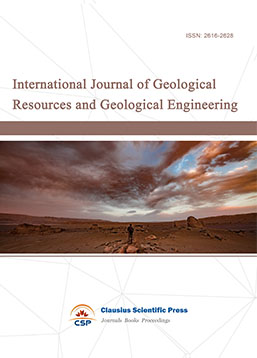
-
Big Geospatial Data and Data Science

-
Solid Earth and Space Physics

-
Environment and Climate Protection
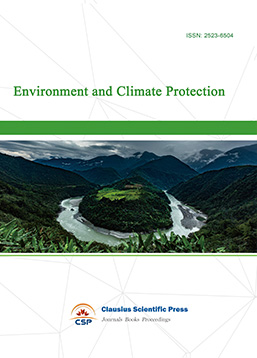
-
Journal of Cartography and Geographic Information Systems

-
Offshore and Polar Engineering

-
Physical and Human Geography
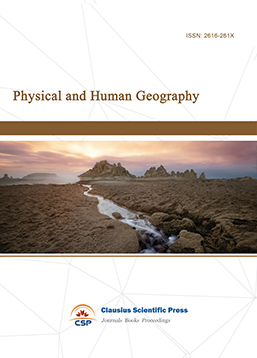
-
Journal of Atmospheric Physics and Atmospheric Environment
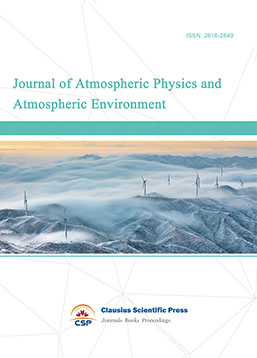
-
Trends in Meteorology

-
Journal of Coastal Engineering Research
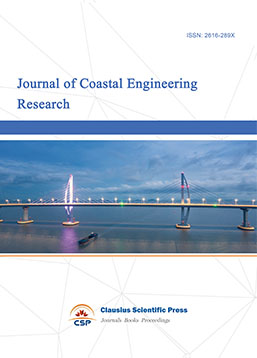
-
Focus on Plant Protection
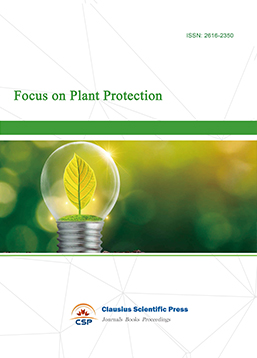
-
Toxicology and Health of Environment
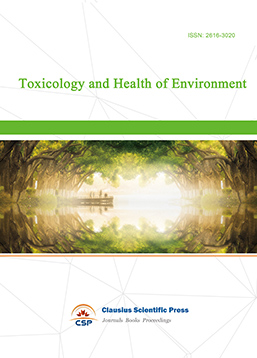
-
Geoscience and Remote Sensing
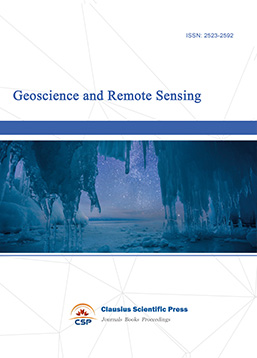
-
Advances in Physical Oceanography

-
Biology, Chemistry, and Geology in Marine
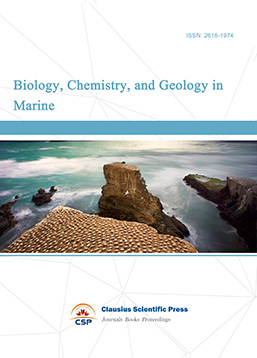
-
Water-Soil, Biological Environment and Energy

-
Geodesy and Geophysics

-
Journal of Structural and Quaternary Geology
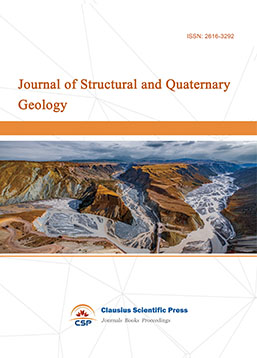
-
Journal of Sedimentary Geology

-
International Journal of Polar Social Research and Review


 Download as PDF
Download as PDF